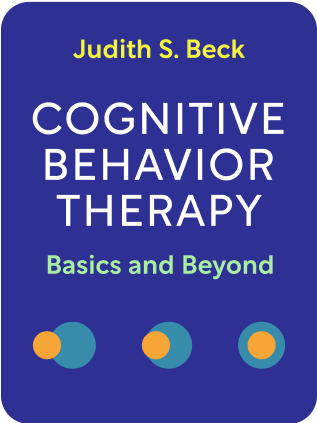

This article is an excerpt from the Shortform book guide to "Cognitive Behavior Therapy: Basics and Beyond" by Judith S. Beck. Shortform has the world's best summaries and analyses of books you should be reading.
Like this article? Sign up for a free trial here .
What are intermediate beliefs? What can you do to reduce harmful intermediate beliefs?
Intermediate beliefs are conditional rules about situations in your life. Some intermediate beliefs can be harmful or unhelpful, like “I should lower my goals so I don’t get disappointed.” CBT techniques can be used to identify unhelpful intermediate beliefs and change them.
Find out more about intermediate beliefs and how to handle them below.
What Are Intermediate Beliefs?
In order to fully understand intermediate beliefs, you first need to know about core beliefs. These are fundamental understandings regarded as absolute truths—just the way things are. Example: “I’m incompetent. They are often not explicitly articulated by the patient consciously.
Early experiences may have developed these—by parents, early authority figures; by a traumatic event; by apparent negative treatment by others (accurate or not). These generally fall into three categories: “I’m helpless.” “I’m unlovable.” “I’m worthless”
Given the same core belief, people may have different intermediate beliefs.
- Say two patients have the same core belief, “I’m not good enough to accomplish my goals.” One patient may have the intermediate belief, “I should work as hard as I can at all times.” Another patient may have a very different belief, “I should lower my goals so I don’t get disappointed.”
- Why do different intermediate beliefs arise? This can be because of genetic predisposition or environmental cues early in life.
How to identify intermediate beliefs:
- The patient may voice the belief, as an automatic thought or when directly asked about intermediate beliefs.
- Provide the first part of an assumption, and the patient fills it in.
- “If I don’t get an A, then ___.”
- Spot patterns to automatic thoughts—an intermediate thought may drive many of these automatic thoughts.
- Use the downward arrow technique: Ask what the automatic thought means to the person. (Asking what the thought means about the person tends to show the core belief.)
- Example questions: “If that’s true, so what?” “What’s so bad about…” “What’s the worst part about…”
- Use questionnaires like the Dysfunctional Attitude Scale or Personality Belief Questionnaire.
Keep probing until you cause a negative affect in the patient, or the patient repeats her answer. This is about as deep as you can go.
Educate the patient about beliefs:
- Show the patient how beliefs are learned and can be changed.
- Ask the patient to think about someone who has different beliefs. Clearly the other person learned different beliefs, and so they’re not absolute rules. Also, clearly the other person isn’t a failure (or whatever the extreme belief would lead the patient to believe about herself).
- Examine the advantages and disadvantages of beliefs.
- Ask if this is an idea the patient would like to change.
Modifying Intermediate Beliefs
In comparison to automatic thoughts, modifying intermediate beliefs may require more persuasion than just Socratic questioning. The key is to clarify the dissonance of the patient’s beliefs; deeper beliefs may require more visceral and narrative depictions.
Here are a range of techniques to use to try to modify the student’s intermediate beliefs:
- Phrase the rule/belief as an if-then assumption—this makes it easier to spot the logical fallacy.
- “If I ask for help, I’ll be seen as weak.” vs “Don’t ask for help.”
- Present more functional beliefs, that are more qualified versions of the old belief
- “If I don’t get an A, I’m a failure.” can be turned into “If I don’t get an A, I’m just human, and I still tried hard. It’s better than 0%.”
- Use Socratic questioning.
- “Let’s say there are 2 people with the same problem. One does [the maladaptive behavior] and feels worse. The other does [a functional behavior] and feels better. Who’s the more competent person?”
- Set up a behavior experiment.
- Act “as if” the belief weren’t true. Then reflect on how that behavior makes the person feel.
- Role play as the patient’s intellectual side and emotional side, with each of you taking a side and swapping turns. As the intellectual side, you explain the rational approach to the situation. As the emotional side, you convey the emotional reaction and automatic thoughts.
- Explain the rationale to the patient that this will let you see what’s really maintaining the belief.
- Be the intellectual side first, to give an example of rational reasoning for the patient. The patient will start as the emotional side.
- After the role play, switch sides. The patient will voice the more functional intellectual thoughts. As you play the emotional side, use the patient’s own words—this will help highlight the dysfunction of the patient’s emotional thoughts.
- Cognitive continuum—establish that the situation isn’t binary, and the patient is likely better on the scale than absolute zero.
- Ask where she is on the scale. Then ask whether there is someone who is worse, and what that person would be doing. Keep drilling until it’s someone who’s at absolute zero. (For example, if the patient is worried she’s an academic failure, absolute zero may be someone who goes to zero classes. The patient can see that she’s better than this person.)
- This technique is useful for patients with “all or nothing” cognitive distortions.
- Ask the patient to imagine another person with a different belief. Then if the patient respects that other person, help her model that belief for herself.
- Ask the patient to counsel someone else in her situation, such as:
- Someone she knows who has the same issue
- Imagining if their child had the issue
- Self-disclosure—you’ve gone through a similar situation before and came up with a solution.
After developing a new, healthier belief, assign homework for the patient to look for situations to practice the new belief and behavior.
Don’t worry about extinguishing the bad behavior entirely. Reducing the belief level to 30% or below is usually sufficient.

———End of Preview———
Like what you just read? Read the rest of the world's best book summary and analysis of Judith S. Beck's "Cognitive Behavior Therapy: Basics and Beyond" at Shortform .
Here's what you'll find in our full Cognitive Behavior Therapy: Basics and Beyond summary :
- How to use CBT to overcome anxiety, sadness, anger, frustration, and stress
- How to address traumatic events earlier in your life, so that they have less hold on your thinking today
- The key ways to build rapport as a cognitive behavior therapist






